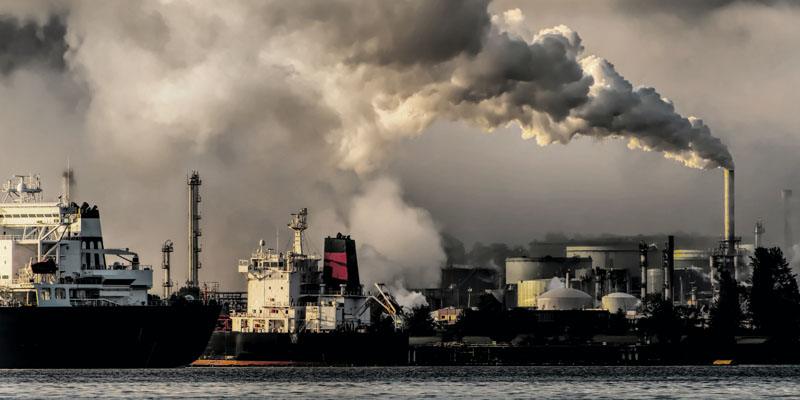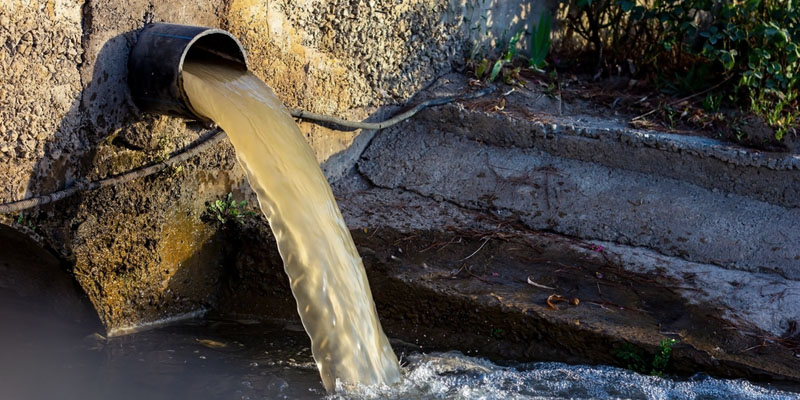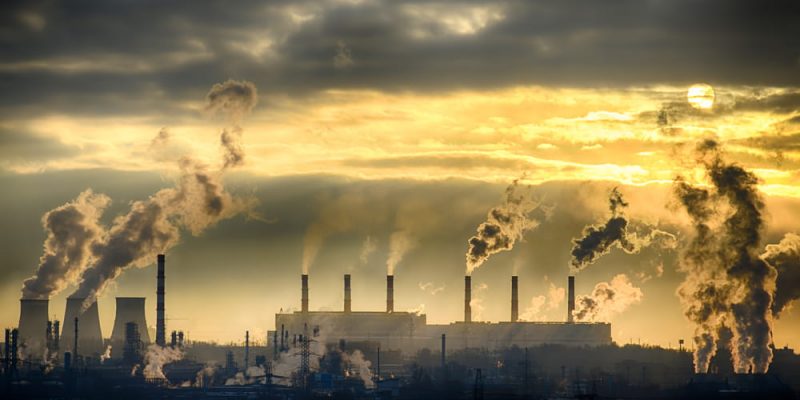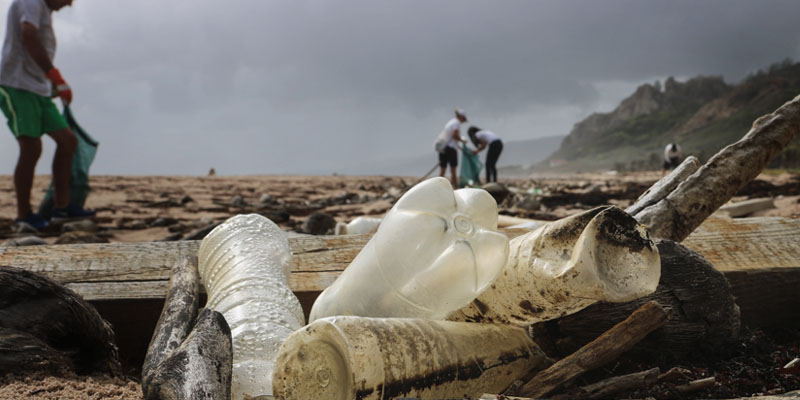We explain what environmental pollution is, and explore its causes and effects. In addition, we discuss its characteristics and types.

What is environmental pollution?
Pollution is the presence of substances or materials in the environment that cause direct or indirect adverse effects on human health and living beings in general. This phenomenon occurs when ecosystems are unable to absorb and eliminate the toxic substances introduced into them, resulting in their accumulation and subsequent environmental degradation.
The effects of environmental pollution may be severe and long-lasting, impacting not only humans but also plant and animal life, as well as soil and water quality. These effects may be observed either directly or indirectly, and may vary in magnitude—from minor environmental issues to the death of plant and animal species.
Moreover, pollution may have negative economic impacts such as reduced agricultural production, lower tourism activity, and the degradation of natural resources.
- See also: Atmospheric pollution
Water pollution

Water pollution is an environmental issue that has negative consequences on human health, aquatic life, and the natural environment in general. It occurs when substances or materials are introduced into water affecting its quality and making it unfit for human or animal consumption.
Factories often use rivers and other bodies of water to dispose of the waste generated by their activities. The absence of adequate regulation and pollution control measures has led to a significant increase in water pollution levels worldwide.
Likewise, a large number of communities discharge raw sewage into water without adequate treatment. Wastewater not properly treated contains bacteria, viruses, and other hazardous chemicals that may have adverse effects on human and animal health.
Water pollution also has a significant impact on the biodiversity of aquatic ecosystems. Chemical substances present in water can kill aquatic organisms and alter natural ecosystems. Furthermore, water pollution may affect food chains and biological processes, which in turn will impact both aquatic and terrestrial ecosystems.
Air pollution

Air pollution is linked to the burning of fossil fuels, industry, agriculture, transportation, and energy production. It is caused by the accumulation of gaseous pollutants in the atmosphere, such as carbon dioxide, methane, carbon monoxide, chlorofluorocarbon, nitrogen oxide, and sulfur oxide.
The main effect of air pollution is climate change. Most gas emissions come from greenhouse gases (GHGs), which increase the amount of heat retained in the atmosphere, causing the planet's global temperature to rise. This rise in temperature has intensified other severe weather phenomena such as droughts, floods, and hurricanes.
- See also: Air pollution
Land pollution

The health and life of all living beings depend on the balance between organic and inorganic matter in soils. Plants, being the base of the food chain, extract nutrients and water from the soil, meaning that any source of pollution in this medium may have negative effects on the health of animals and humans.
The discharge of toxic waste like chemicals, metals, and oils may seriously contaminate soils. They may even seep, accumulate, and remain there for long periods of time, negatively affecting soil quality and all the biodiversity depending on it.
The inadequate use of chemicals in agriculture (such as herbicides, pesticides, and fertilizers) is also a major cause of soil pollution. These substances are used to increase production and protect crops, though if used excessively or inappropriately, they can alter the natural balance of the soil and cause serious environmental issues.
Causes of pollution

Pollutants can be classified into:
- Industrial chemicals. These are waste materials or by-products of industrial and materials transformation processes which, when dumped into the soil or water, alter their chemical balance.
- Greenhouse gases. These are gases that contribute to the rise in the temperature of the planet. The major greenhouse gases are carbon dioxide and methane.
- Radioactive materials. These are toxic radioactive elements capable of causing diseases and genetic mutations.
- Non-biodegradable waste. It includes plastics and petroleum by-products with long biodegradation cycles. They are abundant in the garbage produced daily, degrade plant and animal life, and unbalance ecosystems.
Types of pollution

According to the extent of its source, pollution can be classified into:
- Point source. The pollution source is easily defined and is located at a specific point.
- Linear source. The source of pollution extends along a line or sequence.
- Diffuse. Pollutants are introduced into the environment in a dispersed, multiple, or varied way.
According to the natural environment where it occurs:
- Water or hydric. It occurs when foreign or harmful substances are introduced into the waters of seas, rivers, lakes and lagoons, or into groundwater reservoirs.
- Soil or land. It takes place when foreign or toxic substances spread through soils altering their physical and chemical properties.
- Air or atmospheric. It occurs when gases and suspended solids are dispersed in the atmosphere, degrading air quality.
According to the type of contaminant:
- Chemical pollution. Produced by industrial waste, toxic substances or compounds that alter the chemical and biological properties of the environment.
- Radioactive contamination. Caused by the presence of radioactive materials that can damage the genetic material of living beings.
- Thermal pollution. Caused by air or water temperature rise as a result of human activities.
- Noise pollution. Produced by constant high noise levels that negatively affect living beings.
- Electromagnetic pollution. Produced by electromagnetic waves emitted by telephone antennas, high-voltage towers, radio and television stations, and satellite communication systems that may have negative effects on human health.
- Light pollution. Caused by the excess of artificial light in the environment, which is harmful to human and animal health.
- Visual pollution. Occurs due to the presence of disturbing elements in the urban landscape which impair its visual perception and which, in excess, may generate discomfort and stress, affecting the quality of life.
Degradability
Degradability is a material’s capacity to be decomposed and return to its original state in nature. A material is degradable when it is capable of being broken down by living organisms or by natural processes and is reintroduced into the environment without causing environmental damage or degradation.
Nowadays, degradability has become a major issue due to the negative impact that a large number of materials have on the environment. Most materials used in everyday life (such as plastic or glass) are non-biodegradable, taking hundreds of years to decompose.
This means that once they are discarded, they remain in the natural environment for a long time, generating long-term pollution and ecosystem degradation.
Effects of pollution

Pollution has consequences on life and the balance of ecosystems. Among the most important effects are species extinction, loss of biodiversity, the emergence of diseases (in humans, animals, and plants), increased acid rain, and the worsening of climate change.
Explore next:
References
- Academia Mexicana de Ciencias (2007) Los efectos de la contaminación ambiental sobre nuestra salud. https://www.amc.edu.mx/
- DKV (2022) La contaminación radiactiva: qué es, por qué se produce, cuáles son sus consecuencias. https://dkv.es/
- Instituto para la Salud Geoambiental (s.f) La contaminación atmosférica provoca unas 400.000 muertes prematuras en Europa. https://www.saludgeoambiental.org/
- Ecolec (2021) ¿Qué es la contaminación hídrica? https://ecolec.es/
- FAO (2018) La contaminación de los suelos está contaminando nuestro futuro. https://www.fao.org/
- Martín, E (2022) La contaminación térmica. Causas y consecuencias. https://www.narasolar.com/
- Organización de Naciones Unidas (s.f) ¿Qué es el cambio climático? https://www.un.org/
- UNAM (s.f) Contaminación lumínica. http://www2.astroscu.unam.mx/
Was this information useful to you?
Yes NoThank you for visiting us :)